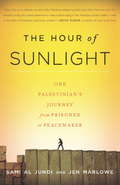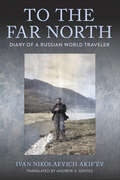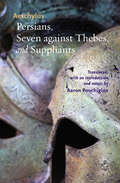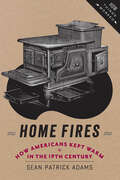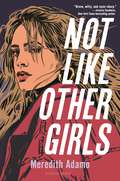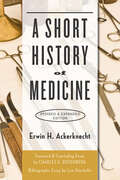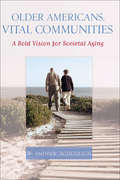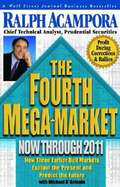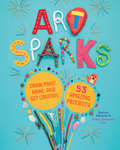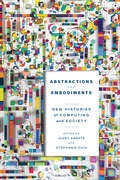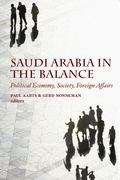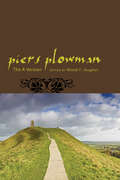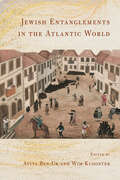- Table View
- List View
The Hour of Sunlight: One Palestinian's Journey from Prisoner to Peacemaker
by Sami al Jundi Jen MarloweAs a teenager in Palestine, Sami al Jundi had one ambition: overthrowing Israeli occupation. With two friends, he began to build a bomb to use against the police. But when it exploded prematurely, killing one of his friends, al Jundi was caught and sentenced to ten years in prison. It was in an Israeli jail that his unlikely transformation began. Al Jundi was welcomed into a highly organized, democratic community of political prisoners who required that members of their cell read, engage in political discourse on topics ranging from global revolutions to the precepts of nonviolent protest and revolution.Al Jundi left prison still determined to fight for his people's rights-but with a very different notion of how to undertake that struggle. He cofounded the Middle East program of Seeds of Peace Center for Coexistence, which brings together Palestinian and Israeli youth.Marked by honesty and compassion for Palestinians and Israelis alike, The Hour of Sunlight illuminates the Palestinian experience through the story of one man's struggle for peace.
The Hour of Sunlight: One Palestinian's Journey from Prisoner to Peacemaker
by Sami al Jundi Jen MarloweAs a teenager in Palestine, Sami al Jundi had one ambition: overthrowing Israeli occupation. With two friends, he began to build a bomb to use against the police. But when it exploded prematurely, killing one of his friends, al Jundi was caught and sentenced to ten years in prison. It was in an Israeli jail that his unlikely transformation began. Al Jundi was welcomed into a highly organized, democratic community of political prisoners who required that members of their cell read, engage in political discourse on topics ranging from global revolutions to the precepts of nonviolent protest and revolution. Al Jundi left prison still determined to fight for his people's rights -- but with a very different notion of how to undertake that struggle. He cofounded the Middle East program of Seeds of Peace Center for Coexistence, which brings together Palestinian and Israeli youth. Marked by honesty and compassion for Palestinians and Israelis alike, The Hour of Sunlight illuminates the Palestinian experience through the story of one man's struggle for peace.
To the Far North: Diary of a Russian World Traveler (NIU Series in Slavic, East European, and Eurasian Studies)
by Ivan Nikolaevich Akif’ëvThis annotated translation of To the Far North presents the diary of a twenty-seven-year-old Russian physician who was part of the 1900 expedition to the Chukotka Peninsula to find gold. No other account so richly details life along the North Pacific Rim before World War I, especially from a Russian perspective. This volume relates the expedition's formation, development, and aftermath and offers unique insights on the region's place in both Russian policymaking and geopolitics. The illustrated diary includes picturesque descriptions of San Francisco, the Nome Gold Rush, Chukchi culture, Petropavlovsk, Vladivostok, and Nagasaki, Japan.Andrew A. Gentes's translation is based on an edition of Akifëv's book that was published in St. Petersburg in 1904. The diary shows how Russian and American views and cultural values clashed over a territory that is today more geopolitically important than ever. By documenting Akifëv's personal travels outside the expedition, To the Far North also demonstrates, in both human and personal terms, the role Russians played in shaping this region's history.
Persians, Seven against Thebes, and Suppliants (Johns Hopkins New Translations from Antiquity)
by AeschylusAaron Poochigian’s new translations of Aeschylus’s earliest extant plays provide the clearest rendering yet of their formal structure. The distinction between spoken and sung rhythms is as sharp as it is in the source texts, and for the first time readers in English can fully grasp the balanced, harmonious arrangement of choral odes. The importance of these works to the history of drama and tragedy and to the history of classical literature is beyond question, and their themes of military hubris and foreign versus native are deeply relevant today. Persians offers a surprisingly sympathetic portrayal of the Athenians’ most hated enemy; in Seven against Thebes Argive invaders, though no less Greek than the Thebans themselves, are portrayed as barbarians; and in Suppliants the city of Argos is called upon to protect Egyptian refugees. Based on textual evidence and the archaeological remains of the Theater of Dionysus at Athens, Poochigian’s introductory overview of stage properties and accompanying stage directions allow readers to experience the plays as they were performed in their own time. He is most careful in his translations of the plays’ choral odes. Instead of rendering them with little or no form, Poochigian has preserved the comprehensive structures Aeschylus himself employed. Readers are thus able to recognize Aeschylus as a master of poetry as well as of drama. Poochigian’s translations are the most accurate renditions of the poetry and dramaturgy of the original works available. Intended to be both read as literature and performed as plays, these translations are lucid and readable, while remaining staunchly faithful to the texts.
Home Fires: How Americans Kept Warm in the Nineteenth Century (How Things Worked)
by Sean Patrick AdamsHome Fires tells the fascinating story of how changes in home heating over the nineteenth century spurred the growth of networks that helped remake American society. Sean Patrick Adams reconstructs the ways in which the "industrial hearth" appeared in American cities, the methods that entrepreneurs in home heating markets used to convince consumers that their product designs and fuel choices were superior, and how elite, middle-class, and poor Americans responded to these overtures.Adams depicts the problem of dwindling supplies of firewood and the search for alternatives; the hazards of cutting, digging, and drilling in the name of home heating; the trouble and expense of moving materials from place to place; the rise of steam power; the growth of an industrial economy; and questions of economic efficiency, at both the individual household and the regional level. Home Fires makes it clear that debates over energy sources, energy policy, and company profit margins have been around a long time.The challenge of staying warm in the industrializing North becomes a window into the complex world of energy transitions, economic change, and emerging consumerism. Readers will understand the struggles of urban families as they sought to adapt to the ever-changing nineteenth-century industrial landscape. This perspective allows a unique view of the development of an industrial society not just from the ground up but from the hearth up.
Home Fires: How Americans Kept Warm in the Nineteenth Century (How Things Worked)
by Sean Patrick AdamsHome Fires tells the fascinating story of how changes in home heating over the nineteenth century spurred the growth of networks that helped remake American society. Sean Patrick Adams reconstructs the ways in which the "industrial hearth" appeared in American cities, the methods that entrepreneurs in home heating markets used to convince consumers that their product designs and fuel choices were superior, and how elite, middle-class, and poor Americans responded to these overtures.Adams depicts the problem of dwindling supplies of firewood and the search for alternatives; the hazards of cutting, digging, and drilling in the name of home heating; the trouble and expense of moving materials from place to place; the rise of steam power; the growth of an industrial economy; and questions of economic efficiency, at both the individual household and the regional level. Home Fires makes it clear that debates over energy sources, energy policy, and company profit margins have been around a long time.The challenge of staying warm in the industrializing North becomes a window into the complex world of energy transitions, economic change, and emerging consumerism. Readers will understand the struggles of urban families as they sought to adapt to the ever-changing nineteenth-century industrial landscape. This perspective allows a unique view of the development of an industrial society not just from the ground up but from the hearth up.
Not Like Other Girls
by Meredith Adamo“Powerful, brilliantly plotted, voicey, gripping, beautiful, heart-wrenching, hilarious . . . Read this book.” -Liz Lawson, New York Times bestselling author of The AgathasWhen Jo-Lynn Kirby 's former best friend-pretty, nice Maddie Price-comes to her claiming to be in trouble, Jo assumes it's some kind of joke. After all, Jo has been an outcast ever since her nude photos were leaked-and since everyone decided she deserved it. There's no way Maddie would actually come to her for help.But then Maddie is gone.Everyone is quick to write off Maddie as a runaway, but Jo can't shake the feeling there's more to the story. To find out the truth, Jo needs to get back in with the people who left her behind-and the only way back in is through Hudson Harper-Moore. An old fling of Jo's with his own reasons for wanting to find Maddie, Hudson hatches a fake dating scheme to get Jo back into their clique. But being back on the inside means Jo must confront everything she'd rather forget: the boys who betrayed her, the whispers that she had it coming, and the secrets that tore her and Maddie apart. As Jo digs deeper into Maddie's disappearance, she's left to wonder who she's really searching for: Maddie, or the girl she used to be.Not Like Other Girls is a stunning debut that takes a hard look at how we treat young women and their trauma, through the lens of a missing girl and a girl trying to find herself again.
A Short History of Medicine
by Erwin H. Ackerknecht Lisa Haushofer.Erwin H. Ackerknecht;€™s A Short History of Medicine is a concise narrative, long appreciated by students in the history of medicine, medical students, historians, and medical professionals as well as all those seeking to understand the history of medicine.Covering the broad sweep of discoveries from parasitic worms to bacilli and x-rays, and highlighting physicians and scientists from Hippocrates and Galen to Pasteur, Koch, and Roentgen, Ackerknecht narrates Western and Eastern civilization;€™s work at identifying and curing disease. He follows these discoveries from the library to the bedside, hospital, and laboratory, illuminating how basic biological sciences interacted with clinical practice over time. But his story is more than one of laudable scientific and therapeutic achievement. Ackerknecht also points toward the social, ecological, economic, and political conditions that shape the incidence of disease. Improvements in health, Ackerknecht argues, depend on more than laboratory knowledge: they also require that we improve the lives of ordinary men and women by altering social conditions such as poverty and hunger.This revised and expanded edition includes a new foreword and concluding biographical essay by Charles E. Rosenberg, Ackerknecht;€™s former student and a distinguished historian of medicine. A new bibliographic essay by Lisa Haushofer explores recent scholarship in the history of medicine.
A Short History of Medicine
by Erwin H. Ackerknecht Lisa Haushofer.Erwin H. Ackerknecht;€™s A Short History of Medicine is a concise narrative, long appreciated by students in the history of medicine, medical students, historians, and medical professionals as well as all those seeking to understand the history of medicine.Covering the broad sweep of discoveries from parasitic worms to bacilli and x-rays, and highlighting physicians and scientists from Hippocrates and Galen to Pasteur, Koch, and Roentgen, Ackerknecht narrates Western and Eastern civilization;€™s work at identifying and curing disease. He follows these discoveries from the library to the bedside, hospital, and laboratory, illuminating how basic biological sciences interacted with clinical practice over time. But his story is more than one of laudable scientific and therapeutic achievement. Ackerknecht also points toward the social, ecological, economic, and political conditions that shape the incidence of disease. Improvements in health, Ackerknecht argues, depend on more than laboratory knowledge: they also require that we improve the lives of ordinary men and women by altering social conditions such as poverty and hunger.This revised and expanded edition includes a new foreword and concluding biographical essay by Charles E. Rosenberg, Ackerknecht;€™s former student and a distinguished historian of medicine. A new bibliographic essay by Lisa Haushofer explores recent scholarship in the history of medicine.
Older Americans, Vital Communities: A Bold Vision for Societal Aging
by W. Andrew AchenbaumThis thought-provoking work grapples with the vast range of issues associated with the aging population and challenges people of all ages to think more boldly and more creatively about the relationship between older Americans and their communities. W. Andrew Achenbaum begins by exploring the demographics of our aging society and its effect on employment and markets, education, health care, religion, and political action. Drawing on history, literature, and philosophy, Achenbaum focuses on the way health care and increases in life expectancy have transformed late life from a phase characterized by illness, frailty, and debility to one of vitality, productivity, and spirituality. He shows how this transformation of aging is beginning to be felt in programs and policies for aging persons, as communities focus more effort on lifelong learning and extensive civic engagement. Concerned that his own undergraduate students are too focused on the immediate future, Achenbaum encourages young people to consider their place in life's social and chronological trajectory. He calls on baby boomers to create institutional structures that promote productive, vital growth for the common good, and he invites people of all ages to think more boldly about what they will do with the long lives ahead of them.
The Fourth Mega-Market, Now Through 2011: How Three Earlier Bull Markets Explain the Present and Predict the Future
by Ralph Acampora Michael D'AngeloA proven leader in the financial world explains the current bull market--and how to profit from it--by comparing it to the great bull markets of the past.Were you surprised by Wall Street's incredible performance over the past few years? Ralph Acampora wasn't. In fact, Acampora, Prudential's top technical analyst, predicted the current bullish trend--and helped countless clients profit from it. Now you can too.Acampora coined the term mega-market to describe a bull market that lasts a minimum of ten years and a maximum of eighteen years with Dow gains of between 400% and 500%. In The Fourth Mega-Market, Acampora helps readers take advantage of the staggering performance of the current market by showing its similarities with the three previous mega-markets in American history. In an entertaining and straight-forward style, and with a wealth of informative charts and graphs, he helps readers recognize patterns that can explain market performance, showing how to use technical analysis to "hear the voices" of the market. He offers valuable tips, such as how to spot and protect yourself from a correction; how psychology and politics influence the market; and how to analyze the performance of various market segments. Finally, he makes exciting predictions on just where the market will go before it ends and how it will get there, giving specific recommendations. While today's information overload keeps us on the edge of our seats, scanning the numbers for subtle clues as to the market's next seismic shift, Ralph Acampora shows us the value of a larger perspective, one that not only explains today's mega-market, but also shows us how to keep investing our money wisely and ride high on the current wave.
Art Sparks: Draw, Paint, Make, and Get Creative with 53 Amazing Projects!
by Marion Abrams Hilary Emerson LayThis lively, colorful compendium of arts and crafts for a new generation of kids features projects specially designed to spark creativity, invite self-expression, and nurture self-confidence. From finger puppets to fabric flags to shrink art, each activity uses inexpensive materials and can be crafted in less than 90 minutes.
Abstractions and Embodiments: New Histories of Computing and Society (Studies in Computing and Culture)
by Janet Abbate Stephanie DickCutting-edge historians explore ideas, communities, and technologies around modern computing to explore how computers mediate social relations.Computers have been framed both as a mirror for the human mind and as an irreducible other that humanness is defined against, depending on different historical definitions of "humanness." They can serve both liberation and control because some people's freedom has historically been predicated on controlling others. Historians of computing return again and again to these contradictions, as they often reveal deeper structures.Using twin frameworks of abstraction and embodiment, a reformulation of the old mind-body dichotomy, this anthology examines how social relations are enacted in and through computing. The authors examining "Abstraction" revisit central concepts in computing, including "algorithm," "program," "clone," and "risk." In doing so, they demonstrate how the meanings of these terms reflect power relations and social identities. The section on "Embodiments" focuses on sensory aspects of using computers as well as the ways in which gender, race, and other identities have shaped the opportunities and embodied experiences of computer workers and users. Offering a rich and diverse set of studies in new areas, the book explores such disparate themes as disability, the influence of the punk movement, working mothers as technical innovators, and gaming behind the Iron Curtain. Abstractions and Embodiments reimagines computing history by questioning canonical interpretations, foregrounding new actors and contexts, and highlighting neglected aspects of computing as an embodied experience. It makes the profound case that both technology and the body are culturally shaped and that there can be no clear distinction between social, intellectual, and technical aspects of computing. Contributors: Janet Abbate, Marc Aidinoff, Troy Kaighin Astarte, Ekaterina Babinsteva, André Brock, Maarten Bullynck, Jiahui Chan, Gerardo Con Diaz, Liesbeth De Mol, Stephanie Dick, Kelcey Gibbons, Elyse Graham, Michael J. Halvorson, Mar Hicks, Scott Kushner, Xiaochang Li, Zachary Loeb, Lisa Nakamura, Tiffany Nichols, Laine Nooney, Elizabeth Petrick, Cierra Robson, Hallam Stevens, Jaroslav Švelch
Saudi Arabia in the Balance: Political Economy, Society, Foreign Affairs (PDF)
by Paul Aarts Gerd NonnemanBrings together in a systematic way such a range of expertise in an integrated project, drawing on the insights of an exceptional cast of scholars from Europe, the US and the Middle East. This book integrates empirical investigation with the social science tools of politics, political economy and international relations.
Piers Plowman: The A Version
by Mí 267 Eál F. VaughanThe fourteenth-century Piers Plowman is one of the most influential poems from the Age of Chaucer. Following the character Will on his quest for the true Christian life, the three dream narratives that make up this work address a number of pressing political, social, moral, and educational issues of the late Middle Ages. Míceál F. Vaughan presents a fresh edition of the A version, an earlier and shorter version of this great work.Unlike the B and C versions, there is no modern, affordable edition of the A version available. For the first time in decades, students and scholars of medieval literature now have access to this important work. Vaughan’s clean, uncluttered text is accompanied by ample glossing of difficult Middle English words. An expansive introduction, which includes a narrative summary of the poem, textual notes, detailed endnotes, and a select bibliography frame the text, making this edition ideal for classroom use.This is the first classroom edition of the A version since Thomas A. Knott and David C. Fowler’s celebrated 1952 publication. Based on an early-fifteenth-century manuscript from the University of Oxford’s Bodleian Library, Vaughan’s text offers a unique rendition of the poem, and it is the first modern edition not to attribute the poem to William Langland. By conservatively editing one important witness of Piers Plowman, Vaughan takes a new generation of students to an early version of this great medieval poem.
Jewish Entanglements in the Atlantic World
Jewish Entanglements in the Atlantic World represents the first collective attempt to reframe the study of colonial and early American Jewry within the context of Atlantic History. From roughly 1500 to 1830, the Atlantic World was a tightly intertwined swathe of global powers that included Europe, Africa, North and South America, and the Caribbean. How, when, and where do Jews figure in this important chapter of history? This book explores these questions and many others. The essays of this volume foreground the connectivity between Jews and other population groups in the realms of empire, trade, and slavery, taking readers from the shores of Caribbean islands to various outposts of the Dutch, English, Spanish, and Portuguese empires.Jewish Entanglements in the Atlantic World revolutionizes the study of Jews in early American history, forging connections and breaking down artificial academic divisions so as to start writing the history of an Atlantic world influenced strongly by the culture, economy, politics, religion, society, and sexual relations of Jewish people.
